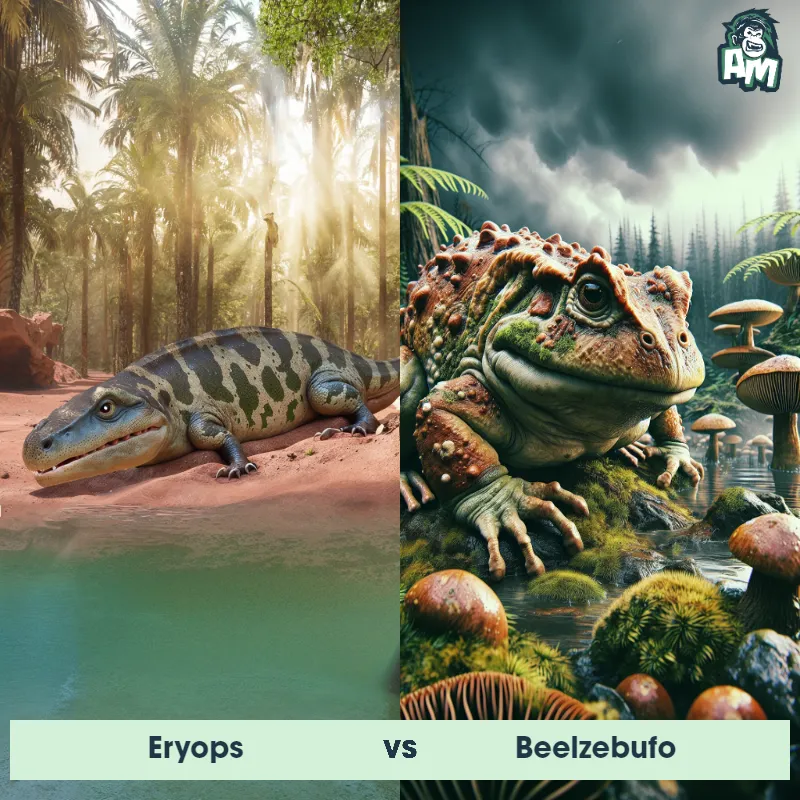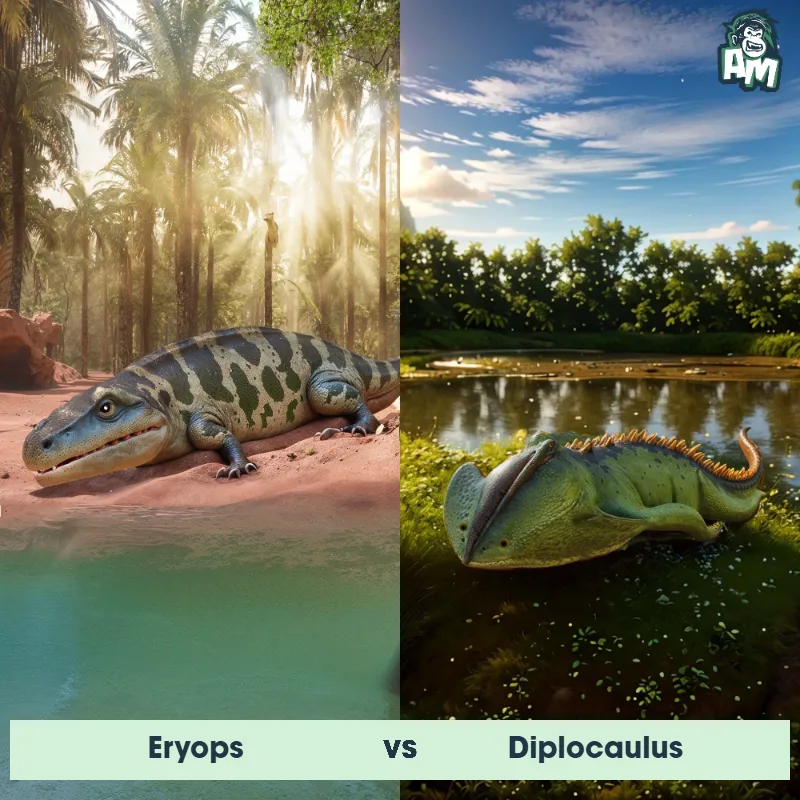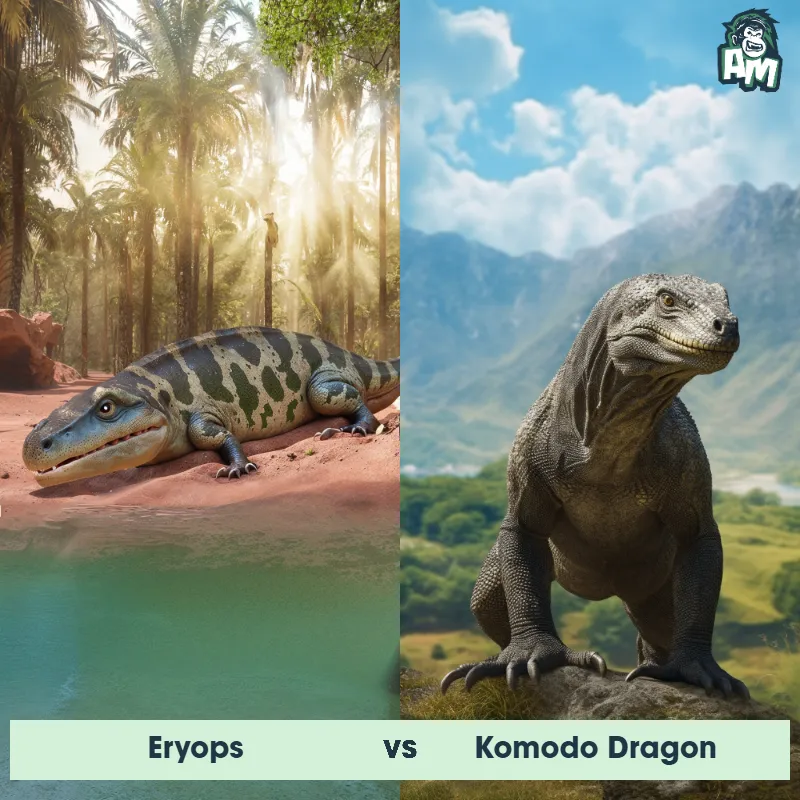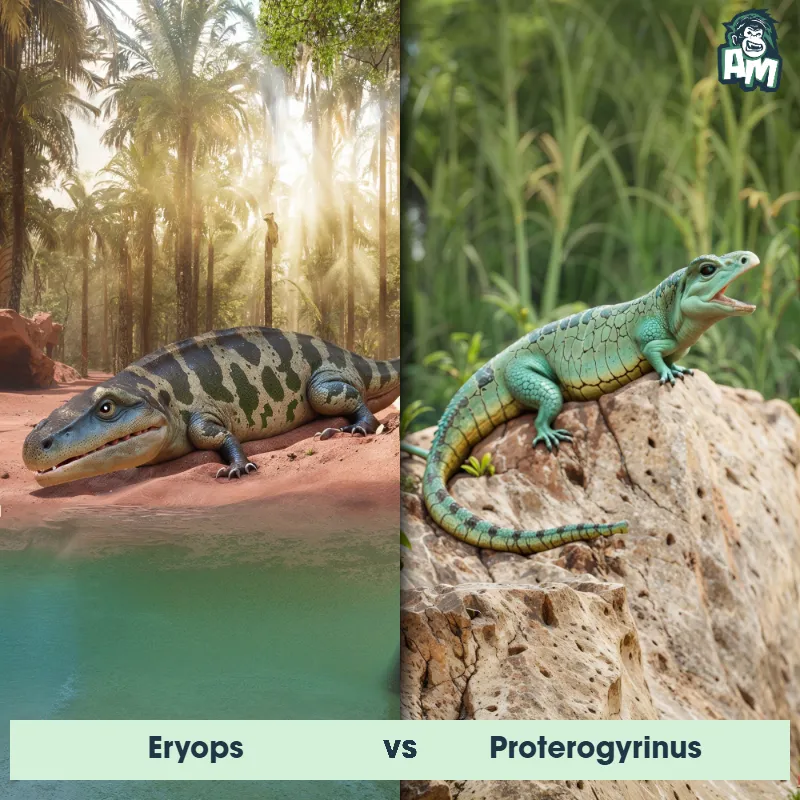The Eryops
The Eryops, also known as the "giant frog," was a large amphibian that lived during the late Carboniferous and early Permian periods. It had a bulky body with strong limbs, reaching lengths of up to 6 feet. Eryops had sharp teeth for catching and devouring prey, and its thick skull could withstand powerful bites.
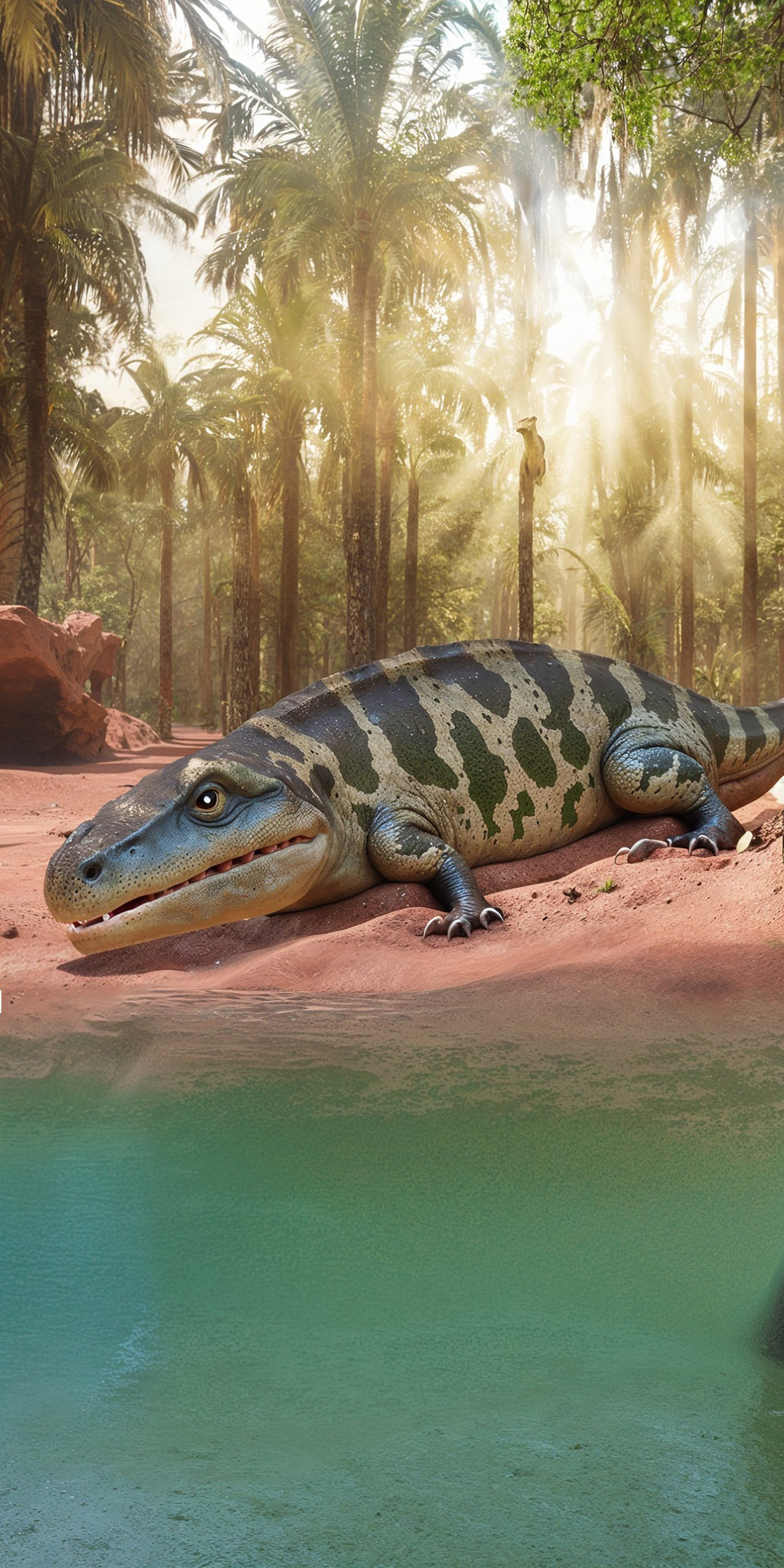
| Eryops | |
|---|---|
| Size | Up to 6 feet (1.8 meters) in length |
| Weight | Around 200-300 pounds (90-136 kilograms) |
| Speed | 5-10mph (8-16km/h) |
| Key Strength | Powerful jaws and sharp teeth for capturing prey |
| Biggest Weakness | Short legs that may limit agility in combat |
| Scientific Name | Eryops |
| Family | Eryopidae |
| Habitat | Freshwater environments |
| Geography | North America |
| Diet | Carnivorous, feeding on fish and other small aquatic animals |
| Lifespan | 15 years - 20 years |

The Eryops
The Eryops, also known as the "giant frog," was a large amphibian that lived during the late Carboniferous and early Permian periods. It had a bulky body with strong limbs, reaching lengths of up to 6 feet. Eryops had sharp teeth for catching and devouring prey, and its thick skull could withstand powerful bites.
Fun Fact: Eryops is believed to be one of the first amphibians to walk on land, making it an important transitional species in the evolution from aquatic to terrestrial life.
| Eryops | |
|---|---|
| Size | Up to 6 feet (1.8 meters) in length |
| Weight | Around 200-300 pounds (90-136 kilograms) |
| Speed | 5-10mph (8-16km/h) |
| Key Strength | Powerful jaws and sharp teeth for capturing prey |
| Biggest Weakness | Short legs that may limit agility in combat |
| Scientific Name | Eryops |
| Family | Eryopidae |
| Habitat | Freshwater environments |
| Geography | North America |
| Diet | Carnivorous, feeding on fish and other small aquatic animals |
| Lifespan | 15 years - 20 years |
Eryops Matchups
We use AI to simulate matchups between the Eryops and other animals. Our simulation considers size, strength, and natural predatory behaviors to determine the most likely outcome.

Can't find the Matchup you want?
Create Your Own MatchupEryops: Diet, Predators, Aggression, and Defensive Behaviors
What do Eryops eat?
Eryops were carnivorous creatures that primarily fed on fish, small amphibians, and other aquatic organisms. They had large, powerful jaws with sharp teeth that allowed them to efficiently catch and consume their prey.
Do Eryops have any predators?
As apex predators during the late Carboniferous and early Permian periods, Eryops did not have many natural predators. However, they may have been occasionally targeted by larger predators such as other amphibians or reptiles.
Are Eryops aggressive?
While Eryops were not inherently aggressive towards other creatures, they were territorial animals that would defend their territory from potential threats. They were known to display aggressive behavior towards intruders or competitors.
Do Eryops fight?
Eryops were known to engage in physical confrontations with rivals or during territorial disputes. These fights often involved pushing, shoving, and biting, as well as displaying their size and strength to intimidate opponents.
How do Eryops defend themselves?
In addition to their aggressive behavior, Eryops had several defense mechanisms to protect themselves from predators or threats. Their large and robust bodies provided some level of protection, while their strong jaws and sharp teeth could be used to fend off attackers.
What is Eryops' biggest weakness in a fight?
Despite their size and strength, Eryops had relatively slow and cumbersome movements on land due to their anatomy. This made them vulnerable to faster, more agile predators or competitors that could outmaneuver them in a fight. Additionally, their reliance on a watery habitat meant that they were less effective in defending themselves on dry land.
Fun Fact: Despite its common nickname, the Eryops was not actually a frog; it was more closely related to modern amphibians like salamanders and newts.
Fun Fact: Fossilized footprints suggest that Eryops may have moved in a sprawling posture similar to modern crocodiles, rather than an upright gait like many other early tetrapods.



